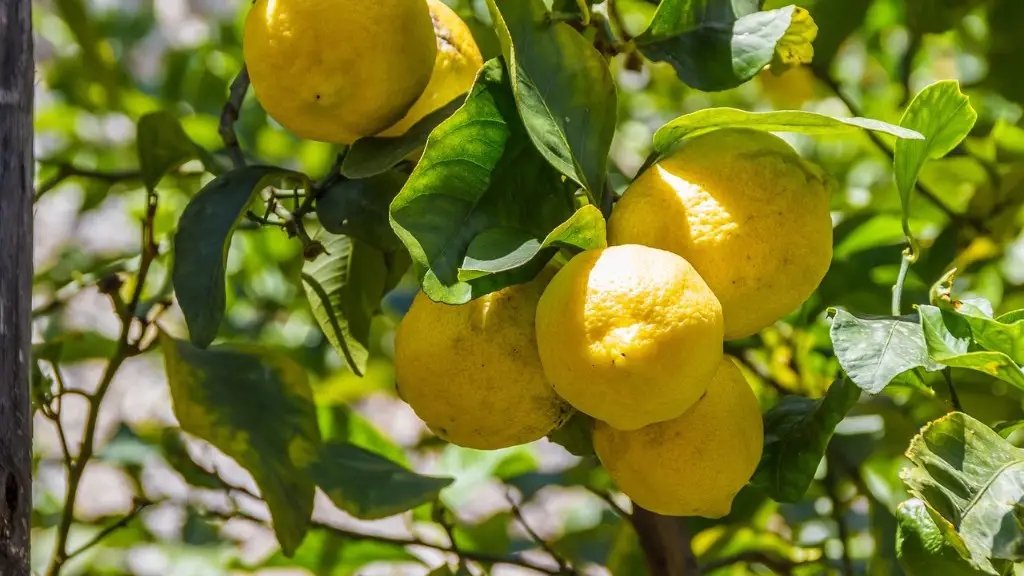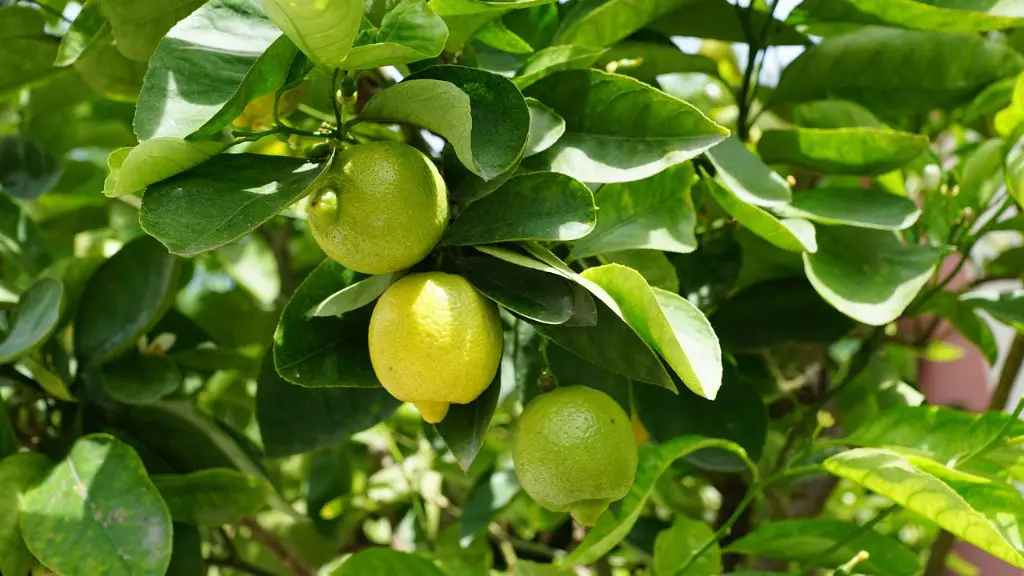Maintaining an apple tree is a difficult but rewarding task. One of the biggest challenges is to keep the tree from growing too tall. The ideal height for an apple tree is between 8 and 10 feet tall, but if not managed correctly, some trees can reach heights of up to 20 feet. With proper pruning and care, it is possible to keep an apple tree from growing too tall. Here are the essential steps for how to stop an apple tree from growing too tall.
Trim Branches
Pruning is a necessary part of keeping an apple tree from growing too tall. Much of the work should be done in the wintertime when the tree is dormant. Pruning should be done according to the overall desired shape of the tree, by removing branches that become too weak to support a harvest. This will also open up the canopy to allow more sunlight and air circulation.
Apply Fertilizer
Giving apple trees an adequate supply of nutrients is an important part of keeping the tree from growing too tall. A balanced fertilizer should be used to make sure the tree is getting all the necessary vitamins, minerals, and micronutrients. A soil test should also be done to ensure that the soil pH is optimal for tree growth.
Water Regularly
When it comes to preventing an apple tree from growing too tall, proper irrigation is essential. A tree should be given 1-2 inches of water each week, either from rains or through manual watering. This will ensure the tree has enough moisture to stay healthy and prevent it from growing beyond its natural height.
Prevent Overcrowding
An apple tree should have plenty of room to grow, so overcrowding should be avoided. Trees should be spaced at least 20 feet apart to give enough room for the trees to get sunlight and air circulation. Also, if there are weeds and other plants growing in the same area, they should be kept in check, as these can steal away nutrients and water from the tree.
Perform Maintenance
As with all trees, regular maintenance is essential for keeping an apple tree from growing too tall. This includes removing dead, weak, or diseased branches, as well as removing competing vegetation thatmay affect the tree’s growth. Pruning should also be done regularly to keep the tree’s canopy open and promote healthy growth.
Provide Sunlight
Apple trees need plenty of sunlight to grow to their full potential. When planting an apple tree, make sure to place it in an area with ample sunlight and away from other trees or structures that might block the sun’s rays. If the tree is in a shady area, it will struggle to thrive and could end up growing too tall.
Maintain Moisture Levels
The soil around an apple tree should be kept moist but not overly wet. Too much moisture can cause the roots of the tree to rot, and the tree should be watered only when the soil feels dry. Mulching can help protect the soil and maintain adequate moisture levels.
Choose the Right Variety
Some varieties of apple trees will naturally stay shorter in height than others. If you want to keep your tree from getting too tall, it is important to do research on the variety you are planting to make sure it is well suited to your space and climate. Some trees are more cold-hardy, while others have a dwarfing effect, helping keep the tree at a more manageable size.
Limit Damage
If an apple tree is damaged due to storms, frost, or pests, it can cause the tree to put unnecessary energy into growing back the damaged limbs and branches. This can cause the tree to reach heights far beyond its natural size. To limit damage, it is important to keep an eye on the tree and treat any issues that arise right away.
Keep an Eye on Growth
Finally, it is important to keep an eye on the growth of an apple tree. If it starts to grow too tall or shows signs of developing too much height, pruning can be done to keep it at the desired size. Pruning should be done carefully and not too often, as over-pruning can lead to weakened branches and less fruit production.
Fertilizing for Optimal Health
Fertilizing an apple tree is important for keeping it healthy and strong. It will help the tree absorb nutrients more easily and keep it balanced and growing at an even rate. Make sure to use a high-quality fertilizer specifically designed for apple trees, and follow the instructions on the package for the best results.
Watch for Disease
Apple trees can be prone to disease and pest infestations, which can stunt their growth or cause them to exceed their natural height. Regularly inspect the tree for signs of disease and treat any problems right away. It is also a good idea to treat the tree with a pest-control product at least once a year.
Regular Pruning
Pruning is one of the most important practices for keeping an apple tree from getting too tall. It should be done during the dormant season in the winter months, and should focus on removing dead, weak, or diseased branches, as well as any competing vegetation. Pruning should be done carefully and not too often, as it can deprive the tree of vital nutrients and cause weakened branches.
Winter Protection
Apple trees can be prone to frost damage in the winter. If your tree is struggling, wrap it in a tarp and put a few layers of straw underneath to protect it from the cold air. Make sure to check the tree periodically, and if it still looks weak, seek professional help.
Planning For Growth
When planting an apple tree, it is important to consider its future growth, and plan accordingly. Planting in an area with plenty of sun and space is essential, as is choosing a variety that is well-suited to your climate. If a tree looks like it is growing too tall, prune branches regularly to keep it at a manageable size.




